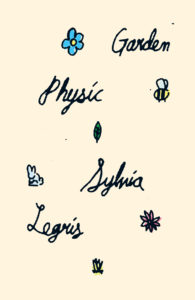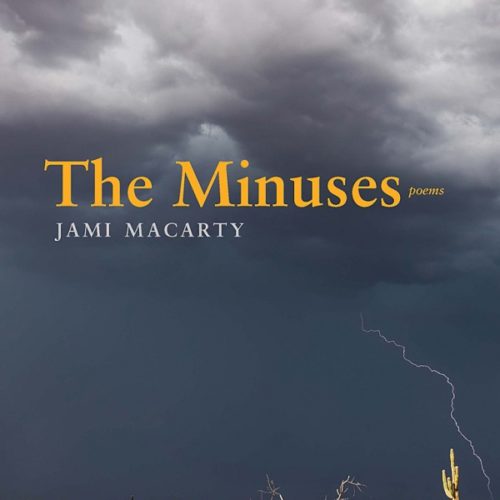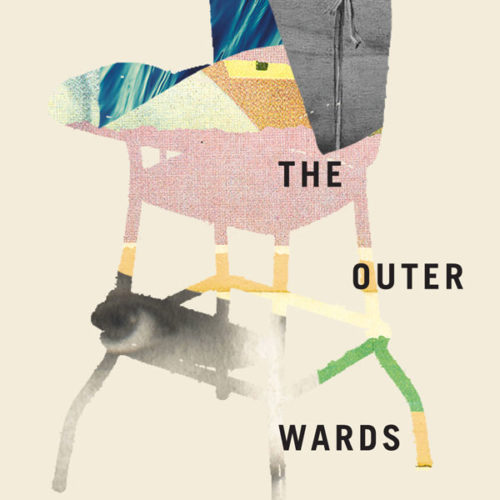 Although Sylvia Legris’s sixth book of poetry, Garden Physic, opens with a poem titled “Plants Reduced to the Idea of Plants” which are then further playfully reduced to “woodcuts / (circa 16th century) reduced to Victorian floor tile,” this collection clearly accomplishes just the opposite: it elevates, celebrates, and even apotheosizes plants. With maps, illustrations, and photographs by the poet, who is also author of Nerve Squall, Pneumatic Antiphonal, Iridium Seeds, Circuitry of Veins, and The Hideous Hidden, Legris constructs this guidebook-like text as a naturalist’s book, a scholar’s book and a poet’s book all at once with tables of contents, appendices (even a visual/collage poem as appendix), and four wild sections gardened together into a lush and living design. Tightly colourful and bodily lines densely allude, alliterate, repeat, and assonate as the poet makes use of several old texts, including Erasmus Darwin’s “The Botanic Garden”, Pedanius Dioscorides (40-90 AD) “de Materia Medica”, and Nicholas Culpeper’s (1616-1654) “The Complete Herbal”, all in the service of explicating and rejoicing in the “breath-contract” between people and plants.
Although Sylvia Legris’s sixth book of poetry, Garden Physic, opens with a poem titled “Plants Reduced to the Idea of Plants” which are then further playfully reduced to “woodcuts / (circa 16th century) reduced to Victorian floor tile,” this collection clearly accomplishes just the opposite: it elevates, celebrates, and even apotheosizes plants. With maps, illustrations, and photographs by the poet, who is also author of Nerve Squall, Pneumatic Antiphonal, Iridium Seeds, Circuitry of Veins, and The Hideous Hidden, Legris constructs this guidebook-like text as a naturalist’s book, a scholar’s book and a poet’s book all at once with tables of contents, appendices (even a visual/collage poem as appendix), and four wild sections gardened together into a lush and living design. Tightly colourful and bodily lines densely allude, alliterate, repeat, and assonate as the poet makes use of several old texts, including Erasmus Darwin’s “The Botanic Garden”, Pedanius Dioscorides (40-90 AD) “de Materia Medica”, and Nicholas Culpeper’s (1616-1654) “The Complete Herbal”, all in the service of explicating and rejoicing in the “breath-contract” between people and plants.
Companion planting is the strategy of planting different plants together that benefit from one another, and Legris expertly pairs her words with similar consideration, sifting the entirety of plant lore and lingo to curate and organise rows of words that echo companion sounds while simultaneously emphasising the interconnectedness of people, plants, and world. “At the center of the garden the heart,” says the speaker in “The Garden Body: A Florilegium” (an anthology of literary extracts), and this garden-heart connection figures centrally. In an interview with Shelagh Rogers for CBC, the poet said of this poem, “It came from trying to imagine what it would look like if you could anatomically arrange a garden plot so that five fingers would be out on the periphery, and you’d have heart trefoil where the heart would be and the plants named after organs in the middle of what would be a torso.” Riffing on this idea of the garden as heart, her speaker intones the cheeky, “The yard wants what the yard wants.” This heart-sense is reflected too in a section called “Floral Correspondences,” which takes from Vita and Harold: The Letters of Vita Sackville-West and Harold Nicolson and The Letters of Vita Sackville-West to Virginia Woolf, to create an entirely invented exchange in which the letter-writers discuss their gardens’ growth with subtextually charged lines like, “I am flush with anticipation. (You in / all my notes to self.)” The poems, like this one, often come in multiple sections, which serves the poet’s layered encyclopaedic style. And though our human use of flowers to convey affection is incredibly common, Legris seeks “to write about flowers without the nauseating sentimental phraseology.” The correspondence gradually morphs and grows its epistolary addresses from “My Darling” and “Dear” to “My My My” and “My Own Own Darling.” But the real affair in this book is Legris’s obvious romance with the sounds of words. Reflecting her love of language, Garden Physic blooms with the diction of anatomy and botany. The collection is name-noun centric with a structure that revels in the pure sound-fun of names, and in the detective work of their etymologies. In the same CBC interview, she explained one of the appendices full of plant names:
I have them divided into idiosyncratic categories—one
of them is Anatomy and Afflictions—and you see these names
of plants that are connected to the human body. We’ve lost, I
think for the most part, that sense of, ‘Why is it called that?
Why is kidney wort called kidney wort or liver leaf called liver
leaf?
Several of the poems detail the etymology of the plant names and muse on monikers like “Call-me-to-you. Kiss-her- / in-the-buttery. Meet-me-in-the-entry.” Or “My rows bode bad with wode whistle, cheatgrass, bad man’s oatmeal, / and yolky toad-flax.” Consequently, they are largely end-stopped, staccato, full of the pleasure of encyclopaedic taxonomy; verbless stretches that can even sound like a cauldron spell as they “[r]esist meager descriptions.” The appendices, which include hand-drawn maps and clipped collage, almost seem like “all the fun things I wish I could include in this collection.”
In addition to the spell of naming, Garden Physic also explores the magic of plants as remedies and salves, sonorously explicating those epithets, uses, and histories. In this way, it acts as a survivalist’s guidebook. The 4th and final section is “de Materia Medica,” subtitled “being an herbal with materials medicinal and bucolic with rhymes and colic,” which mimics the style of ancient texts. This section has its own table of contents and starts putting more than one short poem-like encyclopaedia entry on a page, and many of the poem-entries in the last section come with bracketed book references, such as “[Book 1.103].” There are plants such as “Chuffweed [that] whups the chin-cough” and “Plants that balm the living and plants that preserve the dead.” In “So Blooms”— the poet catalogues the following curatives in italicised, right–justified sections before the title:
Plants for rough tongues and running ears,
for honeycombed ulcers and dreams of bees.
Plants as antidotes, as amulets,
for broken bones and broken flesh.
Plants for dull sight,
for falls from heights.
Plants for flatulence, for fear of water,
for nostrils flowing with blood
Like the Ophelia flower scene in Hamlet (and Legris makes use of allusions to Shakespeare multiple times), each flower has an understood meaning. She reminds readers of the immense and divine power of plants, saying in “Flowers of Brass,” “Pharmacy begins in plants. / Plants are the flesh of the Gods. / In the Kingdoms of Nature the final authority is earth.” In all this “Damp-squib grammar of pretty things and wild mignonette,” the speaker follows her obsessions and occupations, deadheading and arranging gardens as she corridors down lost histories. It’s an engrossing pleasure that perhaps holds more spell than simply sounding magical. In fact, for the poet, it might be a life-ensuring, monumentally important task. In an interview with Will Alexander for Music & Literature, Legris discussed the way poetry has saved her:
I’ve spent much of my life trying to resist the desire to commit
suicide…It was only after I started writing poetry seriously and
conceiving of book-length projects that would take me several
years to complete that I could envision myself existing several
years down the road…writing poetry has made me focused and
disciplined and has given me a sense that maybe I have a
reason to be here…I consider writing or making art to be a hopeful
act.
It seems small–poems, words, gardens–but maybe, for some, it’s enough. Within this tome of flora and fauna, the poet says in Appendix D, “Let this suffice: the story under the understory. The story under tamarack and trembling aspen, under jack pine and black spruce.” Let this suffice, dear reader, let this suffice.
Author’s Bio
Bill Neumire’s second collection of poems, #TheNewCrusade, is available from Unsolicited Press. He serves as poetry editor for Verdad.


